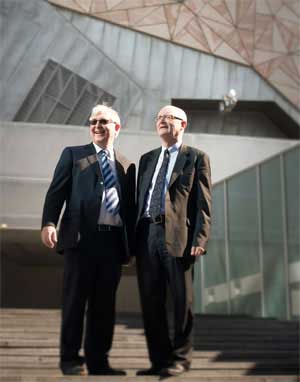Monash-Warwick Partnership
Written by Professor Ed Byrne, Vice-Chancellor of Monash University, and Professor Nigel Thrift, Vice-Chancellor of the University of Warwick
 The alliance formed between the University of Warwick and Monash University will clearly establish both institutions as “globally connected” Universities.
The alliance formed between the University of Warwick and Monash University will clearly establish both institutions as “globally connected” Universities.
Our alliance is designed to ensure that both universities are positioned to compete in a changing environment and offer international opportunities, students, staff and industry partners.
In the next twenty years we’re likely to see big shifts in global influence and structure across all sectors.
Higher education in particular is fast moving toward a world in which there will be four chief models of university:
The first model will be made up of about 30 institutions with such prestigious research and teaching reputations that they will simply be invited to set up boutique operations in host countries at no cost – as Yale has already done in Singapore.
Second, there will be about 50 globally networked research-heavy university ‘systems’ which conduct research and produce graduates across many locations around the world.
The third model will comprise small specialist institutions which are well known globally for some specific prowess, from liberal arts colleges to tropical schools of medicine to performing arts institutions.
Last, there will be the rest: mass institutions doing mass teaching. These institutions will often have considerable international projection and an ability to cater for the increasing demand for tertiary education, but a very limited research capacity.
This emerging landscape reflects the fact that key stakeholders with an interest in universities – students, industry and government – have new and increasing demands in terms of the education they want delivered and the problems they want solved through research.
The Monash/Warwick Alliance is a strategic decision aimed at ensuring both institutions fit firmly into the second category and not only continue to be research intensive institutions, but thrive in this new environment.
Higher Education is in a state of great transition globally. Twenty years from now the definition of a university and the nature of tertiary education will be vastly different from what it is today. We’re moving towards a future where globally networked university ‘systems’ will be needed to meet rapidly increasing demand in research and education. This alliance anticipates this need and delivers both universities an important first-mover advantage.
We must also create an environment in which we are able to leverage one another’s industry partnerships and areas of specialisation. Both Warwick and Monash, despite being relatively young universities, have reputations as places known for innovative partnership with industry.
Both are now in a position to offer industry something entirely new: access to the ideas, knowledge and resources of two universities spanning both hemispheres.
We also want to ensure that all our graduates can compete in an increasingly globalised job market from day one of their working lives. To do this, we need to enhance our teaching offer and ensure that all of our students have access to an overseas experience.
Both partners have committed to the idea that ‘every student is an international student’ and we are taking steps to embed that idea across the student experience.
Essential to this pursuit is an ability to take our domestic students into the international environment via a global network with campuses and facilities in Australia, UK, Italy, Malaysia, South Africa, India and China.
Moving beyond the signing of basic memoranda of understanding, this new network will have an infrastructure which supports meaningful interaction between institutions: deep research collaborations, genuine staff and student mobility, and co-operation across every aspect of our universities.
But importantly this is not about Warwick, or Monash, simply expanding overseas. It is about both institutions becoming nodes in a network that faces outward: outward to the needs of students in the global age and outward towards solutions for increasingly complex global problems.
